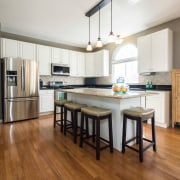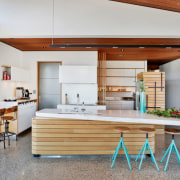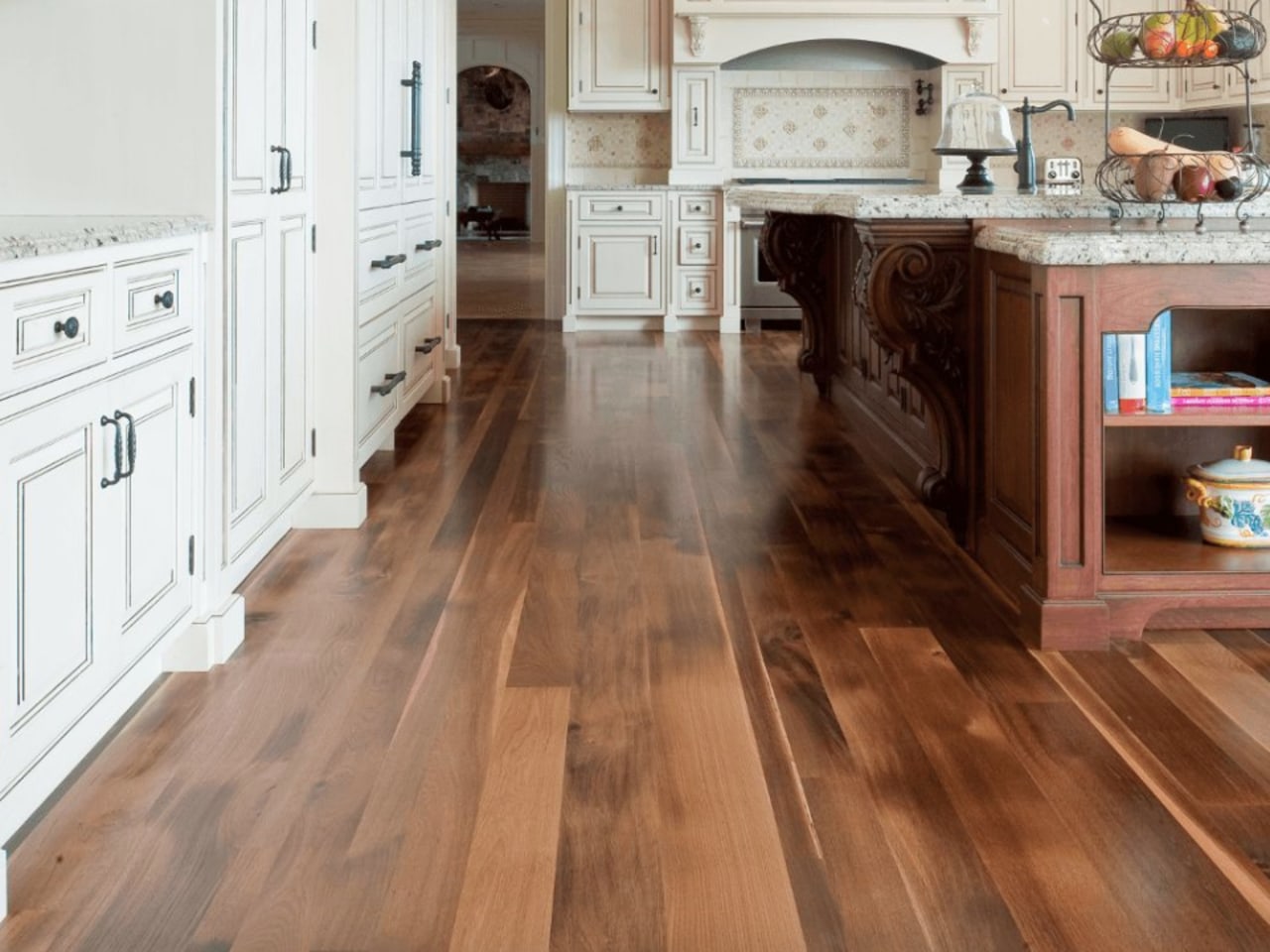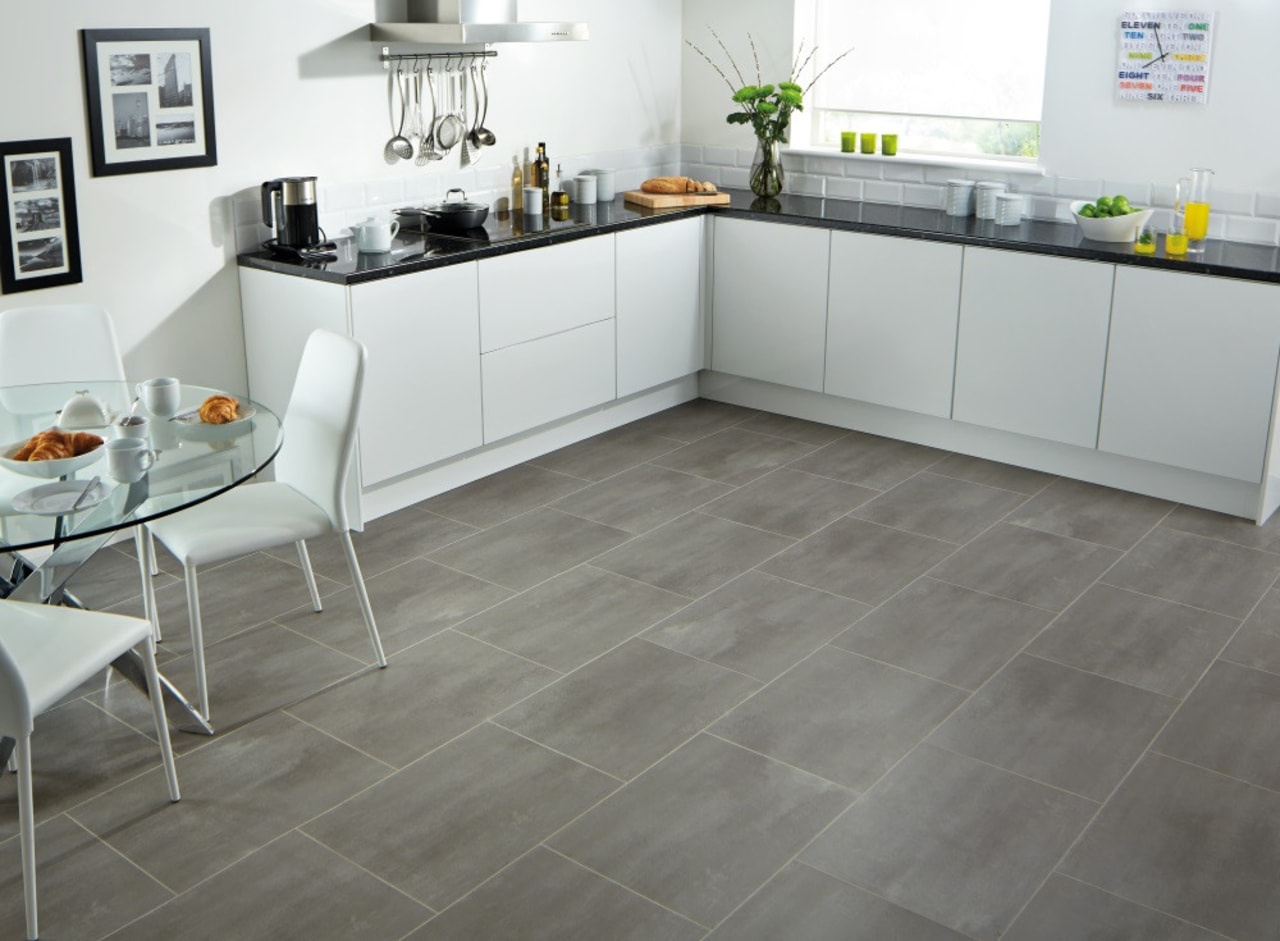The best flooring options for your kitchen
The kitchen is the most high-traffic area in your home, making the right flooring material all the more important
There’s no shortage of options when it comes to kitchen flooring. You’ve got timbers, tiles, linos, laminates and many more materials to choose from.
Here's an overview of the most popular options. But first, a word of caution.
Your kitchen floor needs to be more than just aesthetically pleasing – it needs to be durable if it's to survive the high foot traffic, drops, spills and other types of inevitable wear and tear.
Tile
One of the most popular options for kitchen floors, tiles make a solid choice for a few reasons. They’re durable, look great and repel water. There’s also enough size and colour to make your head spin.
Note that the durability advantage of tiles can be a drawback in some cases, as glasses and plates are liable to smash on impact, whereas a cork or lino floor may cushion the impact.
Dropping a heavy pot or pan could also lead to a cracked tile.
Timber
If you’re looking for a truly timeless kitchen floor look, you can’t go past timber (hardwood). Timber has the benefit of a natural aesthetic, and works especially well when run through the other parts of the home for a seamless look.
You're also not limited in terms of colour or style. There's substantial variation among the different species of timber, from the dark, chocolate-brown colours of walnut to the light, creamy colours of Accoya, Oak and Ash.
Another benefit?
Hardwood floors maintain their finish for years. And if they do start to fade, you can simply re-stain them to restore their original look.
Laminate
If you’re after a kitchen floor with the look of timber or tile, but at a much lower price, laminate is likely the answer. There are a number of companies offering laminate flooring products, and many of these floors accurately replicate the look of more expensive options.
Laminate is more forgiving of drops, and will also repel water and other spills.
The downside is that unlike a real timber floor, laminate can’t be sanded down and re-stained – it’ll have to be replaced once it gets tired.
Cork
While less common nowadays, cork is still a viable kitchen floor option. It’s a natural insulator, making it an excellent choice if you live in a cold area, and it’s also quite affordable.
Cork comes in a number of styles, with some emphasising the natural characteristics of the material while others replicate stone, marble or wood.
You’ll also find cork very comfortable to stand on for long periods of time – something that can’t always be said for timber or tile!
Linoleum
Last but not least, there’s linoleum. Like cork and laminate, lino floors are very comfortable, making them useful for those who spend a lot of time on their feet. With regards to colour and shape options, you’ll find many companies with quite varied product ranges. Again, similar to cork or laminate.
This flooring is also very clean, repelling water and bacteria. It’s certainly a worthwhile considering if you have young children.
Concrete
Don't let their 'cold' appearance put you off – concrete floors, when polished to a sheen, look stylish and contemporary. There are a number of other benefits too – starting with the appearance. You can choose from multiple finishes available, making it easy to use the floor to play off the cabinets and countertops.
Concrete floors are extremely durable, not to mention easy to maintain. You only need to mop them with soap and water.
Stone
Similar to concrete, stone floors offer a stylish, contemporary look with durability to match. There are also many different types of natural stone, giving you flexibility when it comes to picking a style for your kitchen.
If you install these floors over underfloor heating you'll gain an additional benefit as the material naturally retains heat, giving you a warm floor to walk on winter.
Story by: Trends
Home kitchen bathroom commercial design
Personality plus
Diving into nature
Classic looks, contemporary efficiency


















